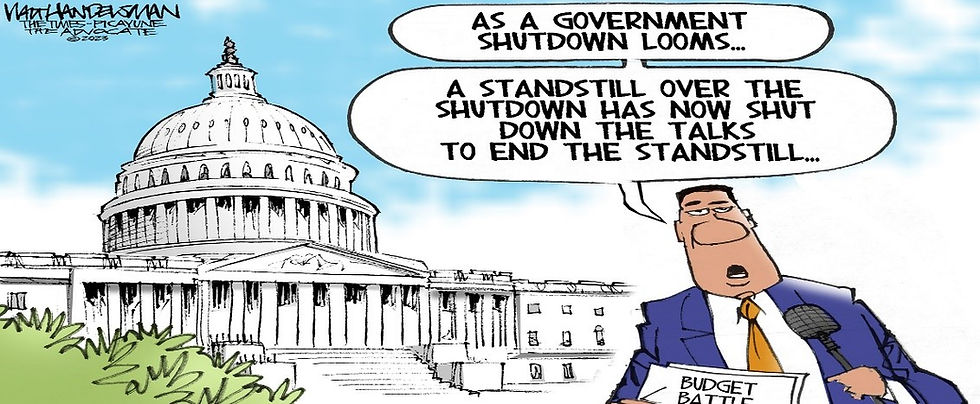Understanding the Impact of Tariffs on the US Supply Chain for Durable Medical Equipment
- dmeruneightinc
- Jun 2
- 3 min read
The landscape of Durable Medical Equipment (DME) is constantly evolving, especially as healthcare demands rise. Tariffs, which are taxes on imported goods, significantly impact this sector by altering costs, availability, and patient care quality. This blog post explores how tariffs affect the US supply chain for durable medical equipment, focusing on the consequences for manufacturers, suppliers, and, most importantly, healthcare providers and patients.
What Are Tariffs and Why Do They Matter?
Tariffs are taxes that governments place on goods imported into a country. They are meant to protect local industries, create government revenue, and influence trade relations. However, when tariffs target medical equipment, the healthcare supply chain experiences significant disruptions.
For example, a 25% tariff on certain imported medical devices can raise costs for hospitals and home healthcare providers. In turn, these increased expenses may be passed on to patients, particularly in publicly funded healthcare systems, where taxpayers could bear the costs of higher medical bills.
The Specifics of Durable Medical Equipment Imports
The term "durable medical equipment" covers a wide range of products, including wheelchairs, oxygen therapy devices, and remote monitoring systems. According to the National Association for Home Care & Hospice, nearly 90% of these items are imported from countries like China and Germany.
When tariffs are imposed, the price for these essential medical products rises. For instance, if a wheelchair previously costing $500 incurs a tariff, its price could jump to around $625. Such increases can severely affect healthcare providers’ budgets, especially when they rely on just-in-time inventory systems. Disruptions caused by tariffs can lead to delays and shortages of critical medical supplies, putting patient care at risk.
The Impact on Manufacturers
US manufacturers of DME face considerable challenges when tariffs are introduced. Many depend on imported components to produce their equipment. With rising production costs, manufacturers must choose between absorbing these costs or raising prices for their final products.
Smaller companies, in particular, feel this pressure more acutely. A reported 30% of small manufacturers may not withstand these increased costs, causing reduced competition and innovation within the sector. Loss of such companies can harm the diversity of products available to patients and healthcare providers alike.
Supplier Responses to Tariff Changes
In response to tariff increases, suppliers often seek alternative sources for raw materials or finished products. This might involve identifying domestic suppliers or exploring new international partners, typically at a higher price point.
For example, a supplier that previously shipped medical devices from abroad may switch to a US-based manufacturer to mitigate tariff costs. However, this transition takes time. During the adjustment period, suppliers may struggle to fulfill healthcare providers’ demands, leading to delays in essential equipment reaching patients.
The Burden on Healthcare Providers
Healthcare providers, from hospitals to home health agencies, are left to navigate the fallout from tariffs and ensuing supply chain disruptions. Rising costs and limited availability often force providers into a tough position when allocating resources.
For example, an infusion pump that incurs a 20% tariff may lead providers to experiment with cheaper, less effective alternatives. Such decisions can compromise the quality of care patients receive, impacting their health outcomes in the process.
Patient Care Above All
Ultimately, the most critical aspect of the DME supply chain is patient care. The availability of effective medical equipment directly influences patient outcomes. Delays caused by tariffs can hinder timely treatment. A 2020 study revealed that a 10% increase in equipment costs could lead to a 15% rise in patient wait times for necessary services.
For patients who rely on DME, even minor delays can have serious health implications, underscoring the need to consider tariff policies within the broader context of patient health and well-being.
Regulatory Responses and Advocacy
In light of the challenges posed by tariffs, regulatory agencies and advocacy groups are vital players. They aim to enhance transparency and foster communication among manufacturers, suppliers, and healthcare professionals.
By raising awareness about the consequences of tariffs on DME, advocates can persuade policymakers to weigh healthcare considerations while drafting trade agreements. A balanced approach should prioritize both trade interests and the urgent needs of the healthcare sector.
Future Outlook and Next Steps
As global trade continues to shift, the effects of tariffs on the US DME supply chain remain an important issue. The healthcare sector must be proactive and nimble in addressing these challenges moving forward.
Stakeholders, including manufacturers, suppliers, and healthcare providers, need to work together to advocate for fair policies and create solutions that mitigate the adverse effects of tariffs. Collaboration is essential to building a robust supply chain capable of ensuring the availability and affordability of vital medical equipment.
Understanding the complex relationship between tariffs and the durable medical equipment supply chain is crucial. As these policies impact pricing and accessibility, their effects are felt throughout the healthcare system. With careful consideration and strategic action, we can protect patient care in a world where tariffs remain a constant influence in international trade.
_edited_edited_edited_edited_edited.png)




Comments